Imagine bringing home a playful puppy that grows into a loyal companion, blending intelligence with gentle affection. For many pet lovers, this vision becomes reality with the great danoodle—a crossbreed combining the best traits of Great Danes and Poodles. Whether you’re researching breeds or preparing for a new family member, understanding this unique dog’s characteristics is the first step toward informed ownership.
This article explores the breed’s history, daily care needs, and training strategies. You’ll learn how responsible breeders prioritize genetic testing and early socialization to raise healthy pups. Families will discover how these dogs thrive in active households, offering both protective instincts and playful energy.
Real-world insights from trusted sources like Day’s DaNoodles highlight the importance of vaccinations and neurological stimulation during a puppy’s critical development phases. Their family-run approach ensures transparency, giving owners confidence in their adoption journey.
From grooming tips to activity recommendations, every section aims to simplify complex animal care topics. By the end, you’ll have a clear roadmap for welcoming a four-legged friend into your life—one day at a time.
Understanding the Great Danoodle Breed
The journey of the great danoodle begins with intentional crossbreeding, merging the gentle giant nature of Great Danes with the hypoallergenic coats of Poodles. This hybrid first gained traction in the early 2000s, designed to combine size, intelligence, and low-shedding traits. Reputable breeders like Day’s DaNoodles prioritize genetic testing to minimize health risks, ensuring parent dogs are cleared for conditions common in both breeds.
Breed History and Genetic Background
Great danoodles trace their lineage to two iconic breeds: the dignified Great Dane and the clever Poodle. Breeders aim to balance the Dane’s calm demeanor with the Poodle’s trainability. For example, Day’s DaNoodles conducts hip evaluations and cardiac screenings to produce healthy litters. These practices highlight how ethical programs prioritize longevity over trends.
Distinct Physical and Temperament Traits
Standing 24-30 inches tall, danoodles inherit a sturdy frame and wavy or curly coats. Their temperament blends loyalty with playful curiosity, making them ideal for active families. Unlike some breeds, they adapt well to apartment living if exercised daily. Socialization from puppyhood ensures they remain confident around children and other pets.
Their intelligence requires mental challenges, such as puzzle toys or obedience drills. This trait stems from their Poodle ancestry, while their protective instincts reflect the Great Dane’s watchful nature. Prospective owners appreciate their low-shedding coats, though regular grooming prevents matting.
Caring for Your great danoodle at Home
Maintaining a happy, healthy hybrid dog starts with consistent routines tailored to their unique needs. Owners should focus on three pillars: structured nutrition, preventive healthcare, and environmental safety. These elements ensure your pet thrives physically and mentally while adapting to home life.
Daily Care and Health Considerations
Feed your dog high-quality food divided into two meals to prevent bloat—a common risk in large breeds. Measure portions based on weight and activity level, consulting your vet for personalized advice. Daily exercise like brisk walks or backyard play sessions helps manage energy levels while strengthening joints.
Reputable breeders like Day’s DaNoodles recommend biannual vet checkups to monitor heart health and hip stability. Keep vaccinations current and discuss allergy testing if your pet shows skin irritation. Puppies benefit from early socialization classes to build confidence around other animals.
Proper Grooming and Coat Maintenance
Their poodle-influenced coat requires weekly brushing with a slicker tool to prevent mats. Curly-haired dogs may need professional trimming every 6-8 weeks, while short-coated varieties benefit from rubber grooming gloves. Use hypoallergenic shampoo to maintain natural oils during baths.
Incorporate puzzle feeders or scent games to mentally stimulate your pet between outdoor activities. For detailed strategies on managing mixed-breed grooming needs, explore this mini aussiedoodle care guide. Trim nails monthly and clean ears weekly to prevent infections, especially in floppy-eared pups.
Training and Obedience for Your Danoodle
Building trust with your hybrid companion starts with structured routines that channel their smarts and vigor. Reward-based methods work best, turning lessons into engaging games. Early socialization and mental challenges prevent boredom, ensuring balanced behavior around kids and pets.
Effective Obedience Training Techniques
Start with short, positive sessions—5-10 minutes daily—to teach commands like “sit” or “stay.” Treats and praise reinforce desired actions. Clicker training helps mark precise moments of success, speeding up learning.
Consistency matters. Use the same cues for each activity, and avoid harsh corrections. Large breeds like danoodles respond better to patience than force. Mix obedience drills with playtime to keep energy focused.
Socialization and Behavioral Management
Introduce puppies to varied environments, sounds, and people by 16 weeks. Structured playdates teach dogs to get along with others. Dog parks offer safe spaces for practicing social skills.
Separation anxiety can emerge in active breeds. Combat this with puzzle toys stuffed with treats. Schedule exercise before alone time to ease restlessness. A tired dog is a calm dog.
Integrating a Danoodle into Family Life
Welcoming a danoodle into your household requires planning that aligns their energetic personality with your family’s rhythm. Breeders like Day’s DaNoodles raise puppies in active homes, ensuring they adapt smoothly to diverse lifestyles. Focus on gradual introductions and structured routines to build trust while meeting their physical and emotional needs.
Adapting to Children and Other Pets
These dogs thrive in homes with kids when taught boundaries early. Start with supervised play sessions, rewarding calm behavior around toddlers. One owner shared how their danoodle learned to “gentle fetch” after watching children play with softer toys.
Socialization with cats or smaller pets works best when introduced during puppyhood. Use baby gates to create safe zones, allowing animals to observe each other first. Consistent praise helps reinforce positive interactions over time.
Creating a Safe and Stimulating Home Environment
Big dogs need space to stretch and play. Designate a corner with chew-resistant beds and puzzle feeders to keep them busy. Secure trash cans and household chemicals—curious noses explore everything.
Busy families can maintain exercise routines by splitting walks between morning and evening. Involve kids in feeding schedules using measured portions to prevent overeating. A 20-minute game of hide-and-seek with treats taps into their natural problem-solving skills.
Day’s DaNoodles emphasizes consistency: “Dogs mirror family energy.” Establish set meal times and quiet hours to help your pet feel secure. Rotate toys weekly to spark interest without overwhelming them.
Expert Insights from Trusted Great Danoodle Breeders
Behind every healthy great danoodle puppy lies a breeder’s commitment to excellence and transparency. Reputable programs like Southern Illinois-based Day’s DaNoodles combine rigorous health protocols with personalized support, setting the standard for hybrid dog development.
Inside a Responsible Breeding Program
Day’s DaNoodles uses Embark genetic testing to screen parent dogs for 230+ health risks common in great dane poodle mixes. Their litters receive early neurological stimulation exercises, boosting confidence and adaptability. Puppies measure 22-28 inches tall at maturity and typically weigh 70-100 lbs, aligning with standard poodle hybrid expectations.
Breeders provide a 1-year health guarantee alongside complete vaccination records, reflecting their partnership with licensed veterinarians. This family-run operation prioritizes open communication, inviting prospective owners to ask detailed questions about lineage or care needs.
Real-Life Stories and Breeder Guidance
One danoodle owner shared how Embark tests revealed their pet’s low risk for hip dysplasia—a common concern in large breeds. Breeders emphasize monitoring food intake (4-6 cups daily for adults) and using puzzle feeders to slow eating.
The American Kennel Club recognizes hybrid vigor in dane poodle mixes when bred responsibly. Day’s DaNoodles advises families to seek breeders who document size trends (like 26-inch shoulder height averages) and coat types for informed adoption decisions.
Final Reflections on Cherishing Your Great Danoodle
Choosing a loyal companion like the danoodle means embracing a blend of intelligence, warmth, and adaptability. These dogs stand out among hybrid breeds for their balanced temperament—calm yet playful, protective yet gentle. Responsible breeding practices ensure they inherit the best traits from their Great Dane and Poodle lineage, creating pups ready to thrive in diverse households across the United States.
Families value danoodles for their low-shedding coats and family-friendly nature. Weekly brushing maintains their wavy or curly fur, while regular vet visits support lifelong health. Their social personality shines when introduced early to children, pets, and new environments—key to nurturing confident, well-adjusted dogs.
Modern dog breeds like this poodle mix flourish in homes prioritizing structure and engagement. Puzzle toys, daily walks, and positive reinforcement training channel their energy productively. Breeders emphasize the importance of cohesive routines, ensuring these pets become cherished members of your world.
From playful pups to dignified adults, danoodles reward dedicated owners with unwavering loyalty. By investing in proper care and socialization, you’ll enjoy years of companionship with a breed designed to enrich everyday life. Let their unique charm remind you why hybrid dogs continue winning hearts nationwide.
FAQ
What is the average lifespan of a Great Danoodle?
This hybrid breed typically lives 8–12 years. Proper diet, regular vet checkups, and moderate exercise help maintain their health. Genetic factors from the Great Dane and Poodle parent breeds may influence longevity.
Are Danoodles suitable for families with young children?
Yes, their gentle temperament makes them good companions for families. Early socialization ensures they adapt well to kids. Supervision is recommended during play due to their large size.
How much daily exercise do these dogs require?
They need 45–60 minutes of activity daily, like walks or interactive games. Their energy levels vary based on dominant parent traits, but mental stimulation is equally important.

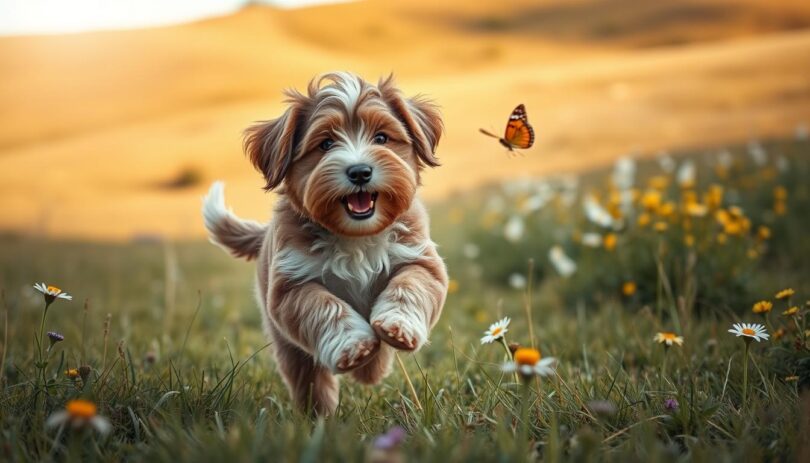
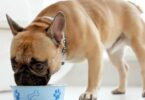
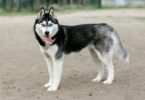
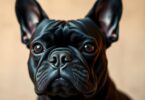
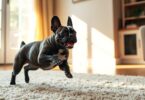

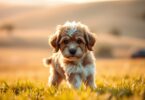
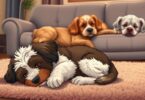

Leave a Comment